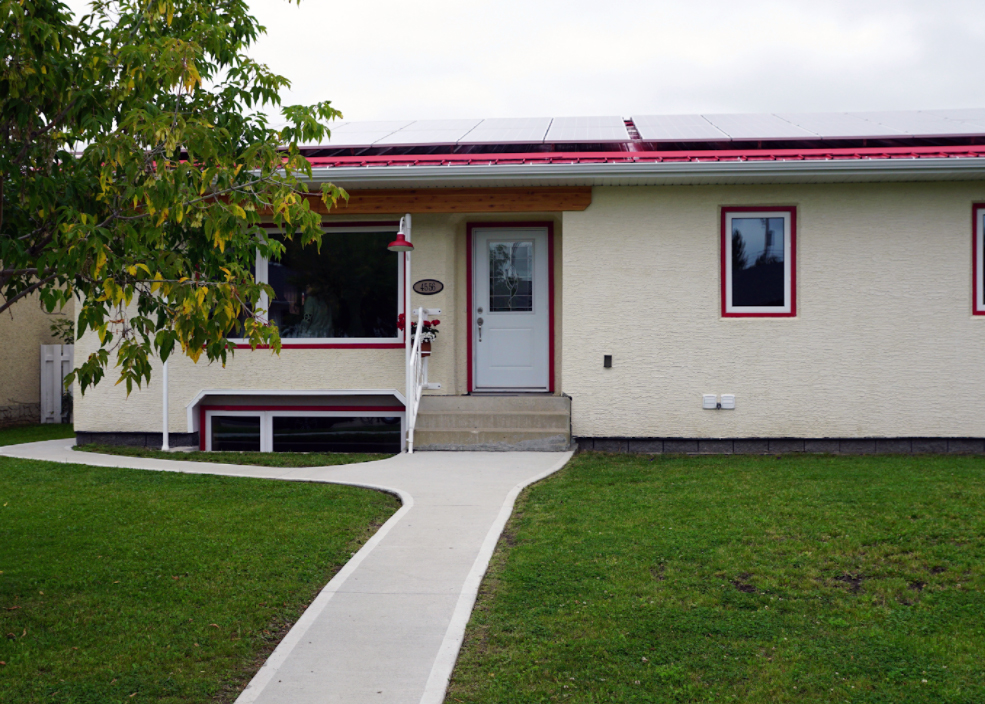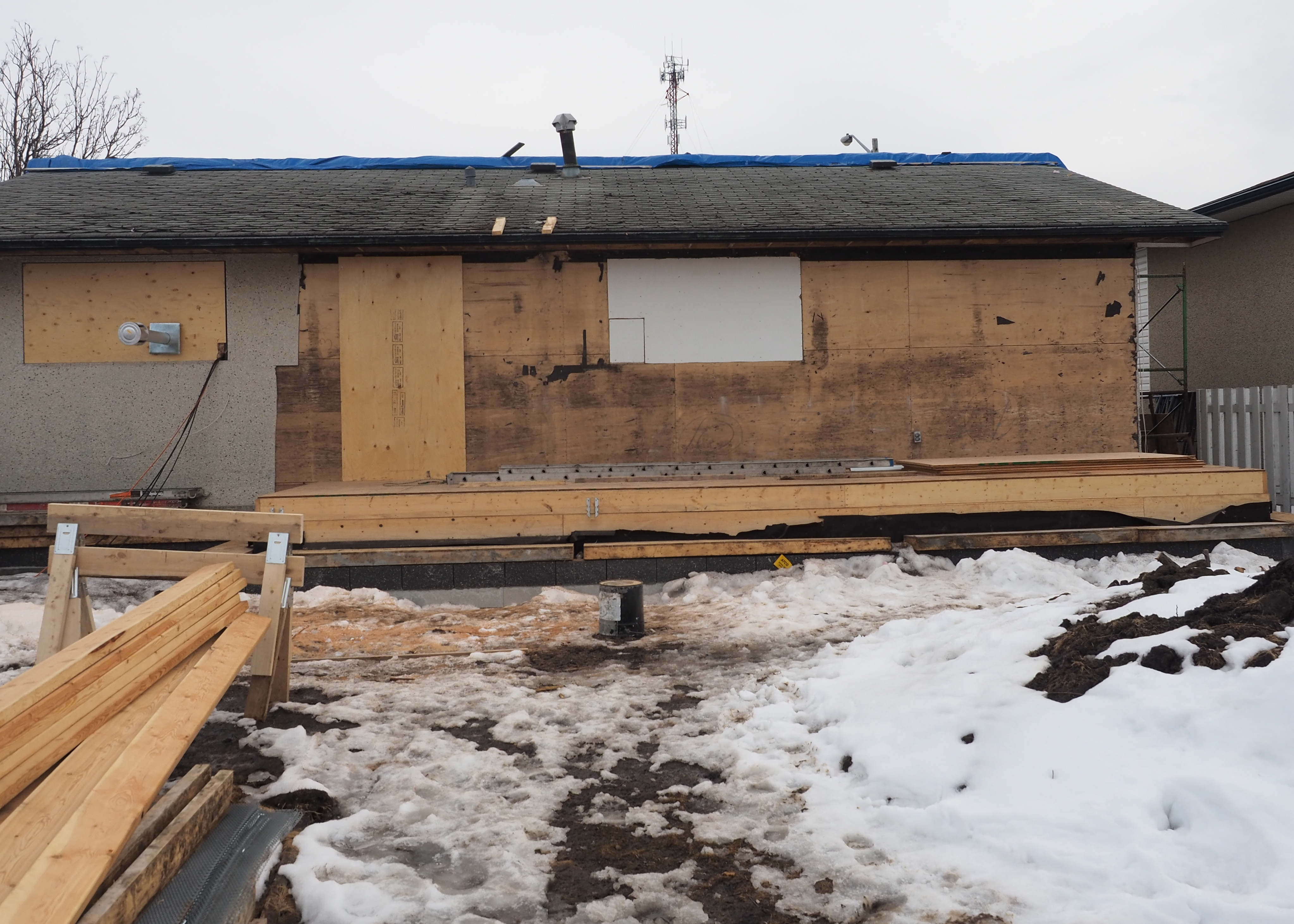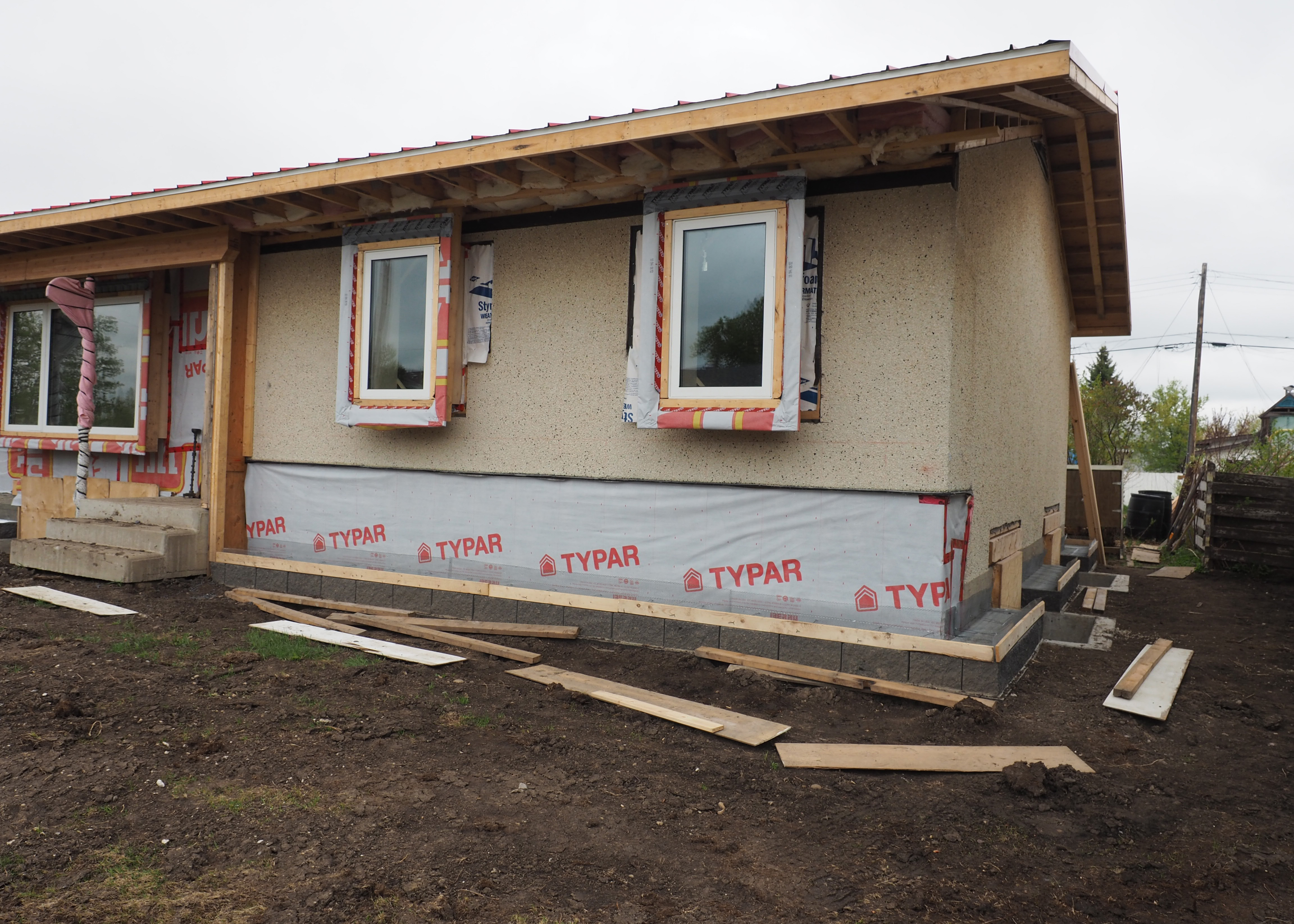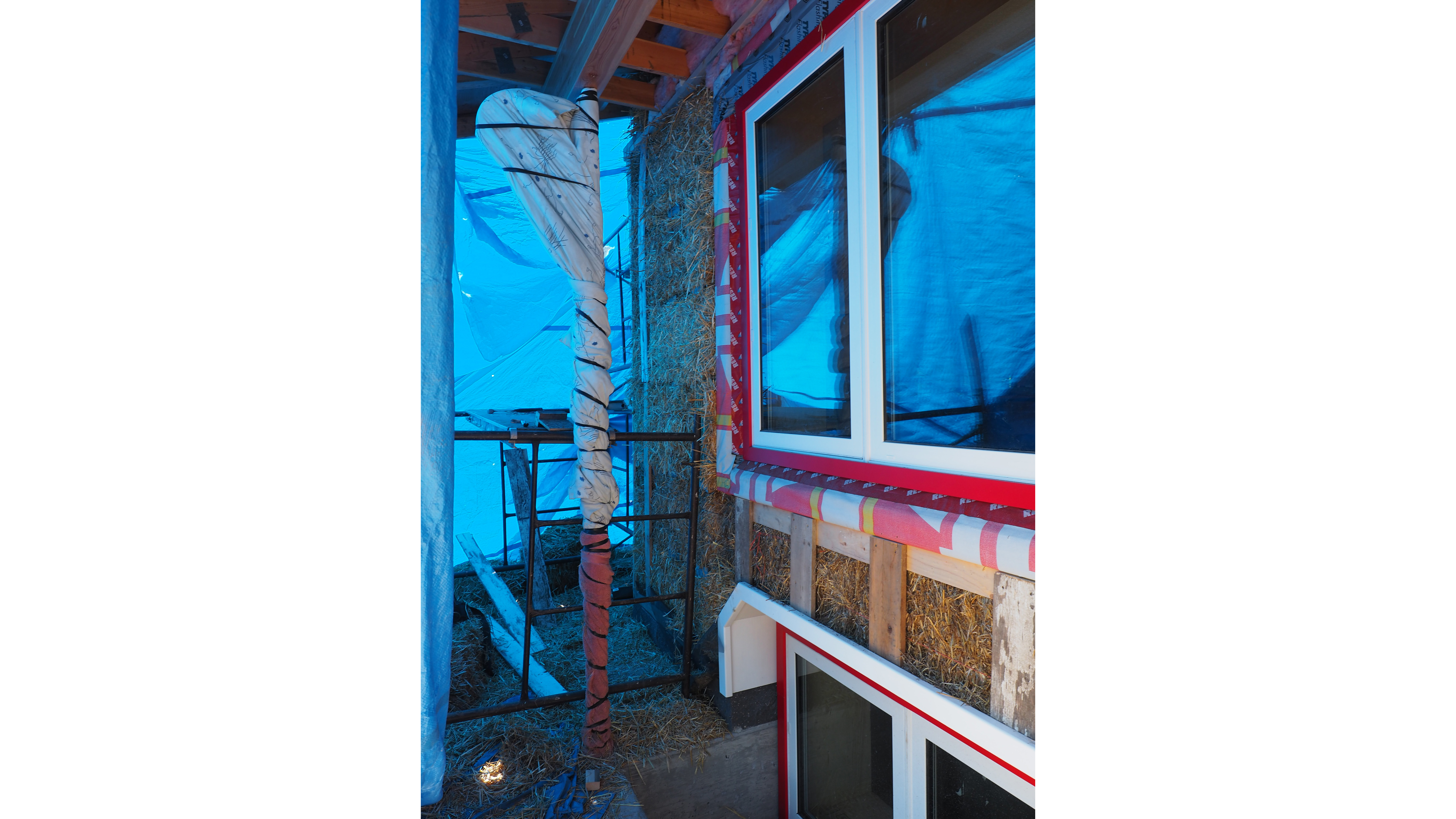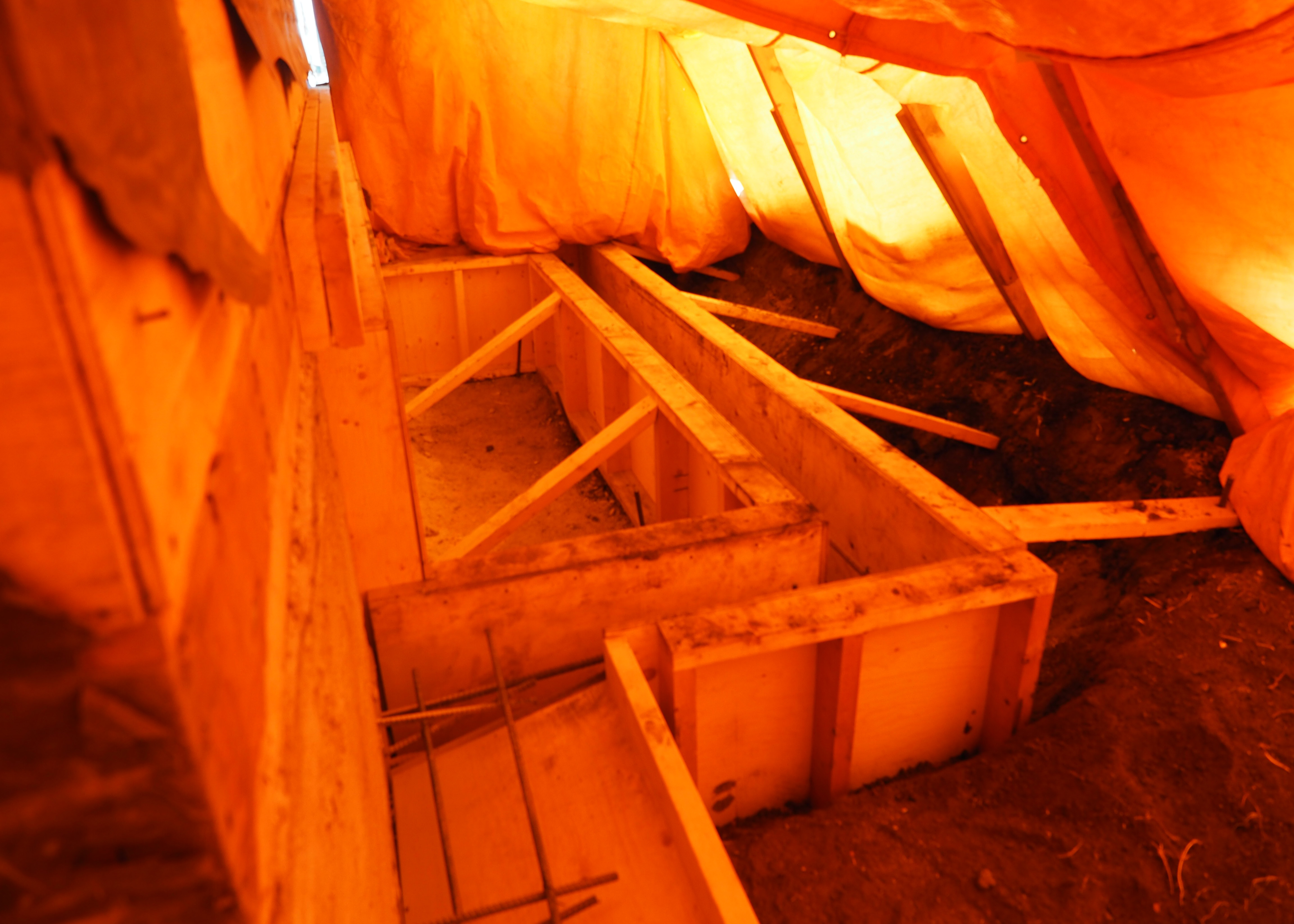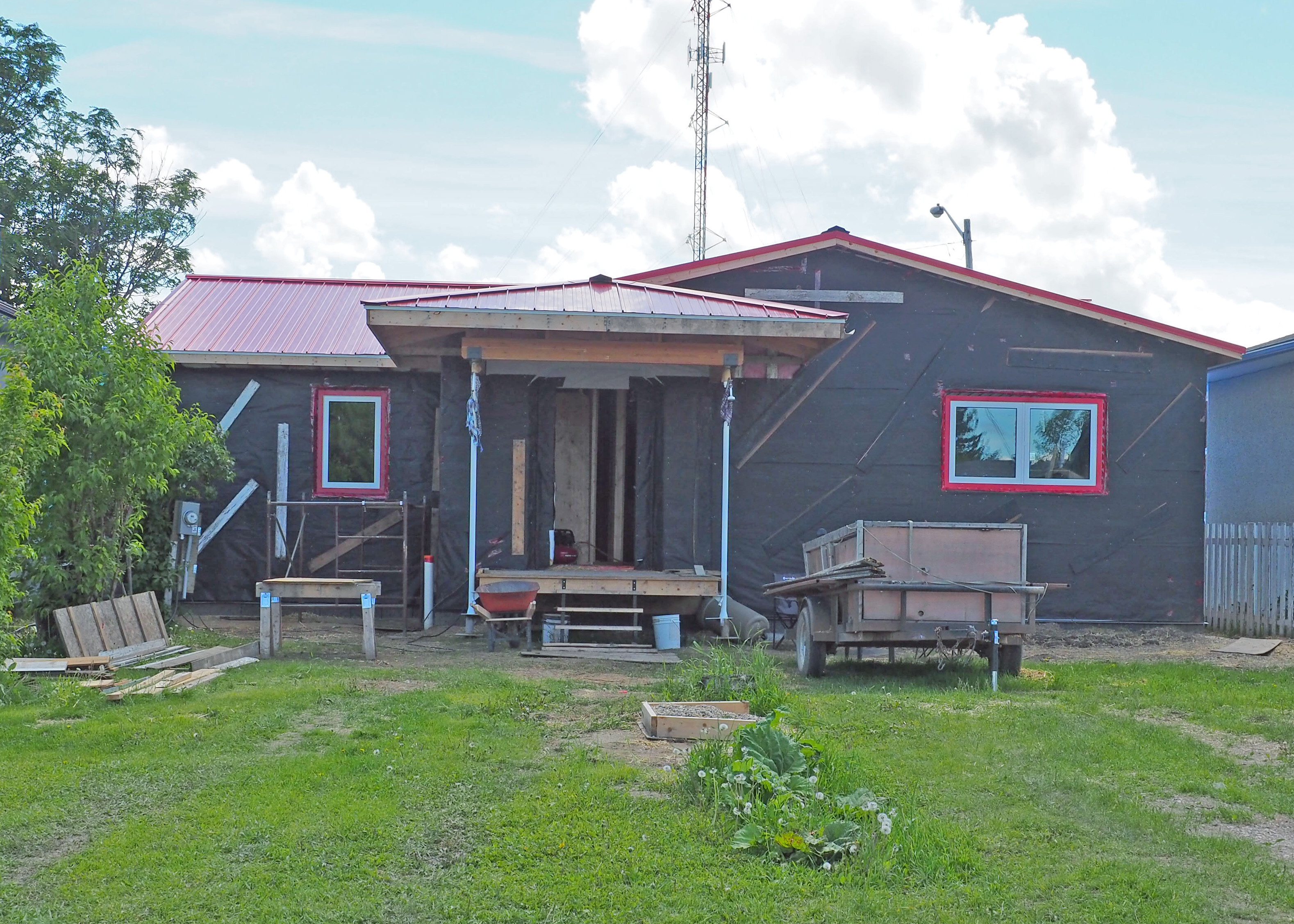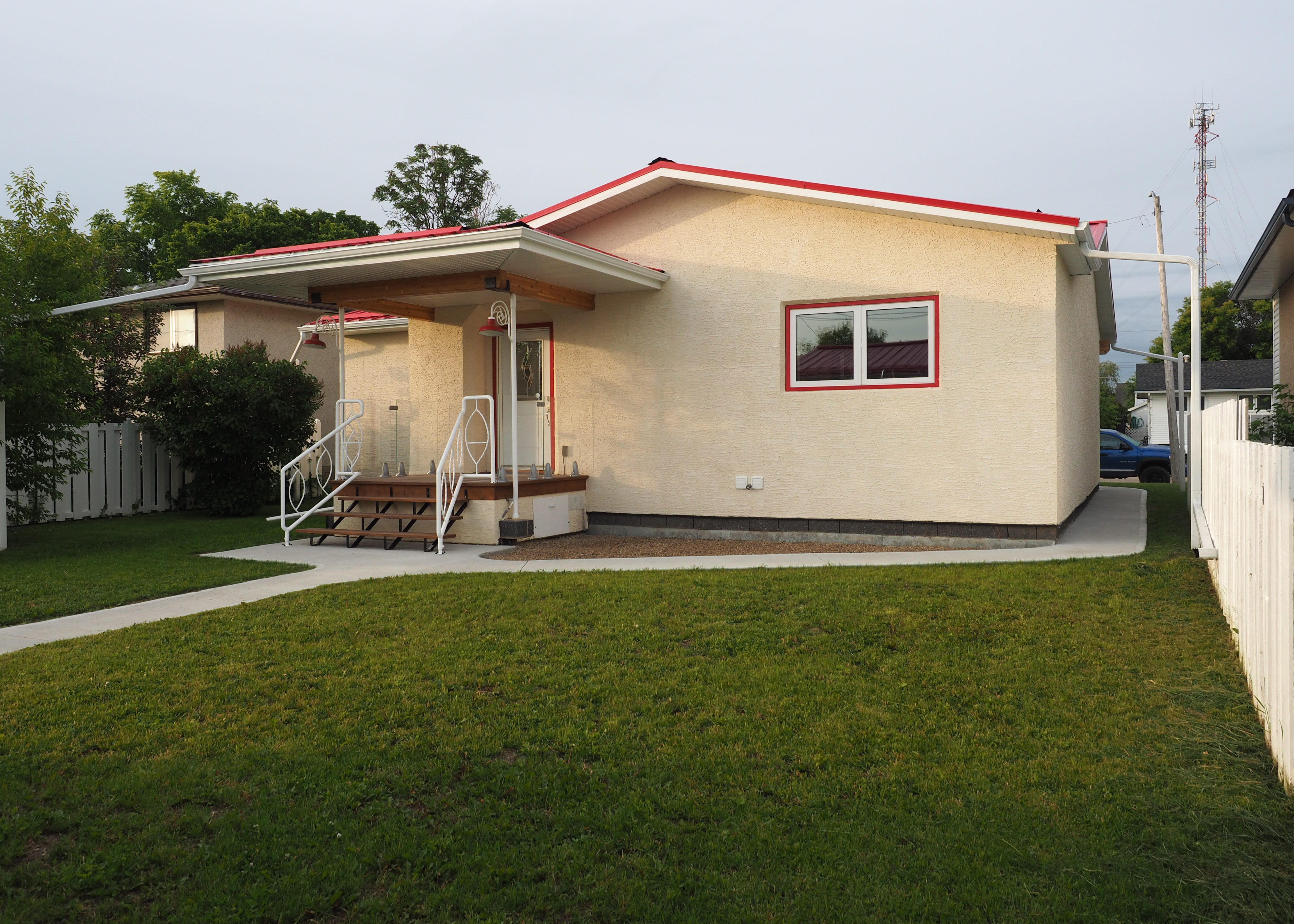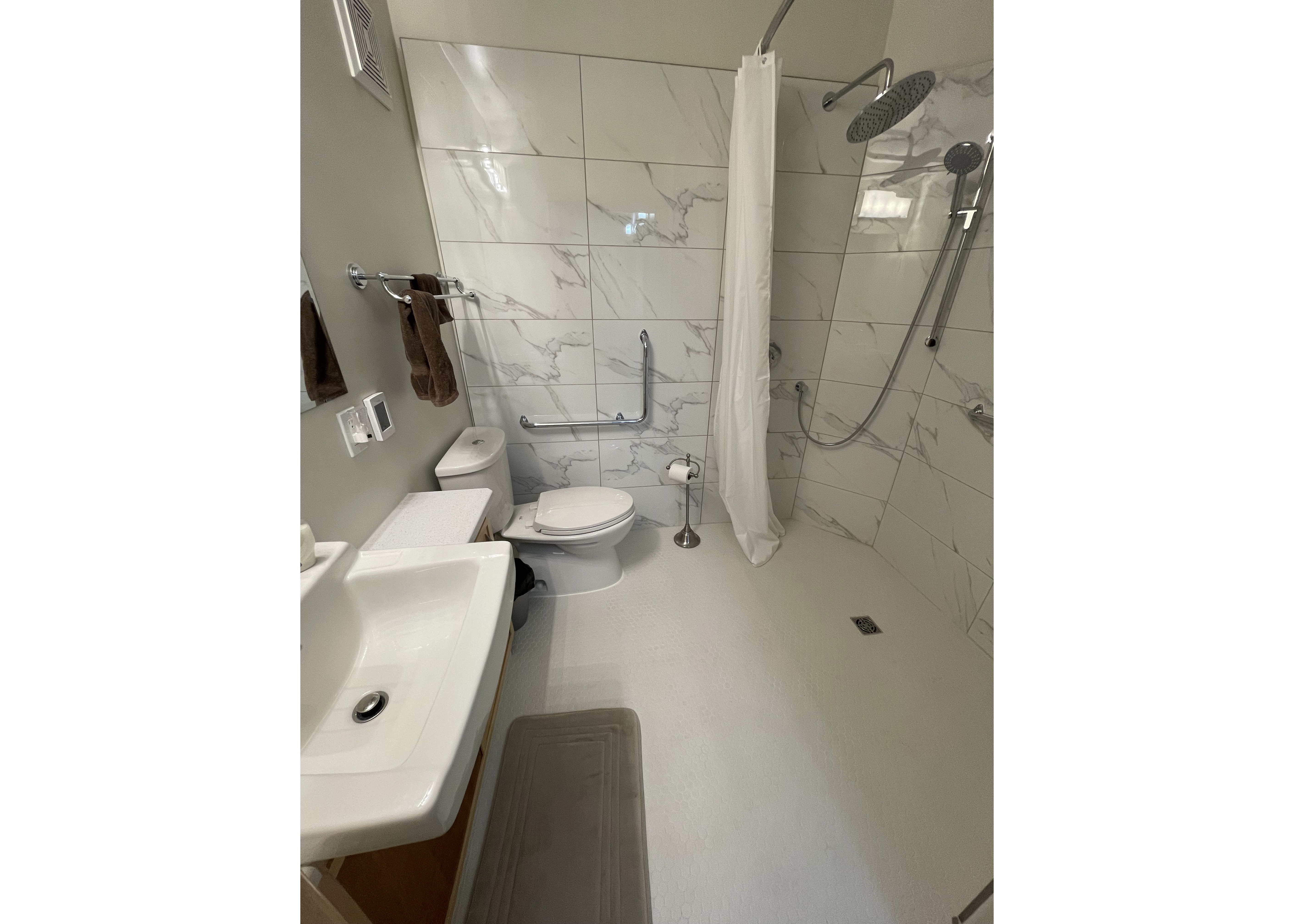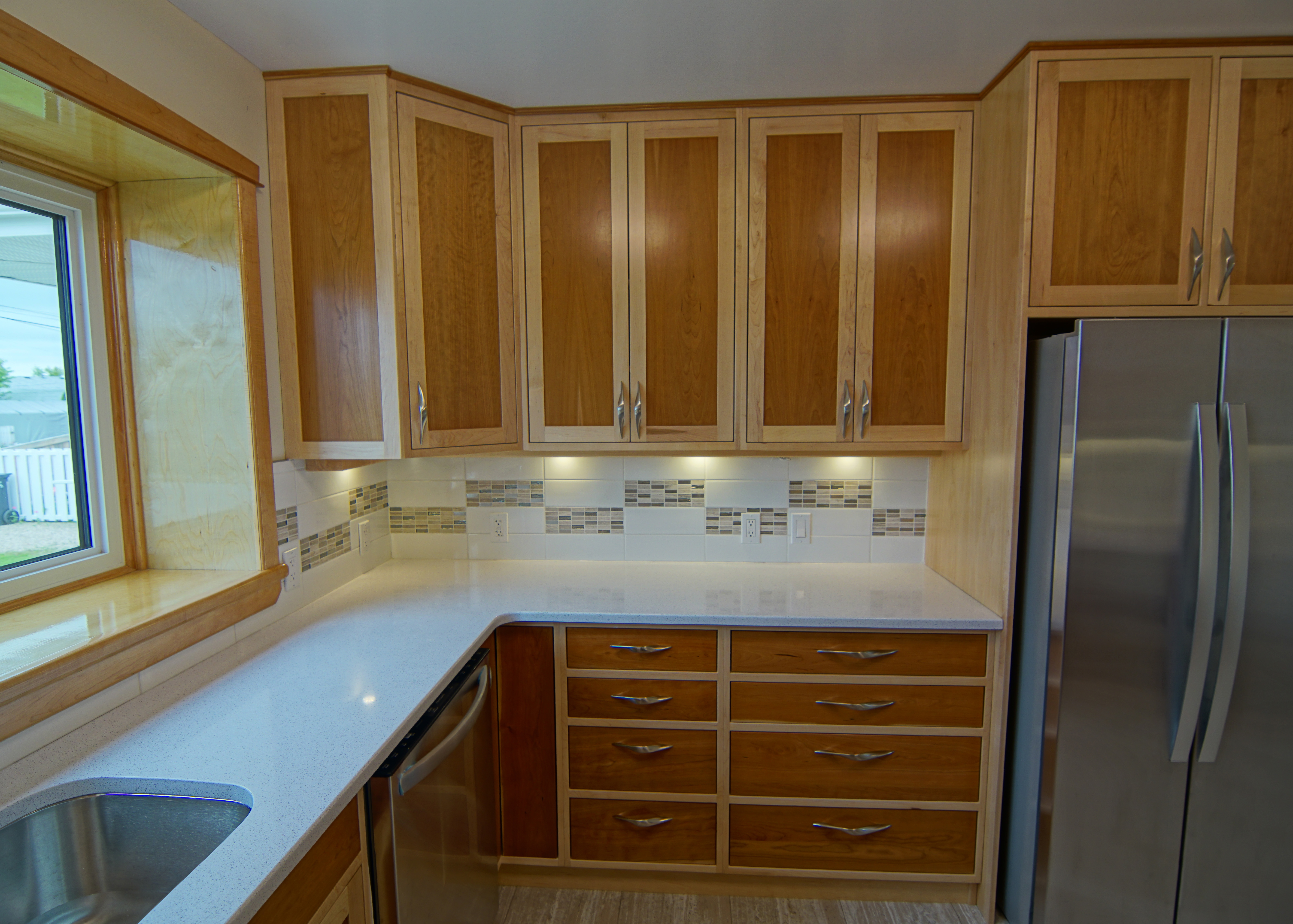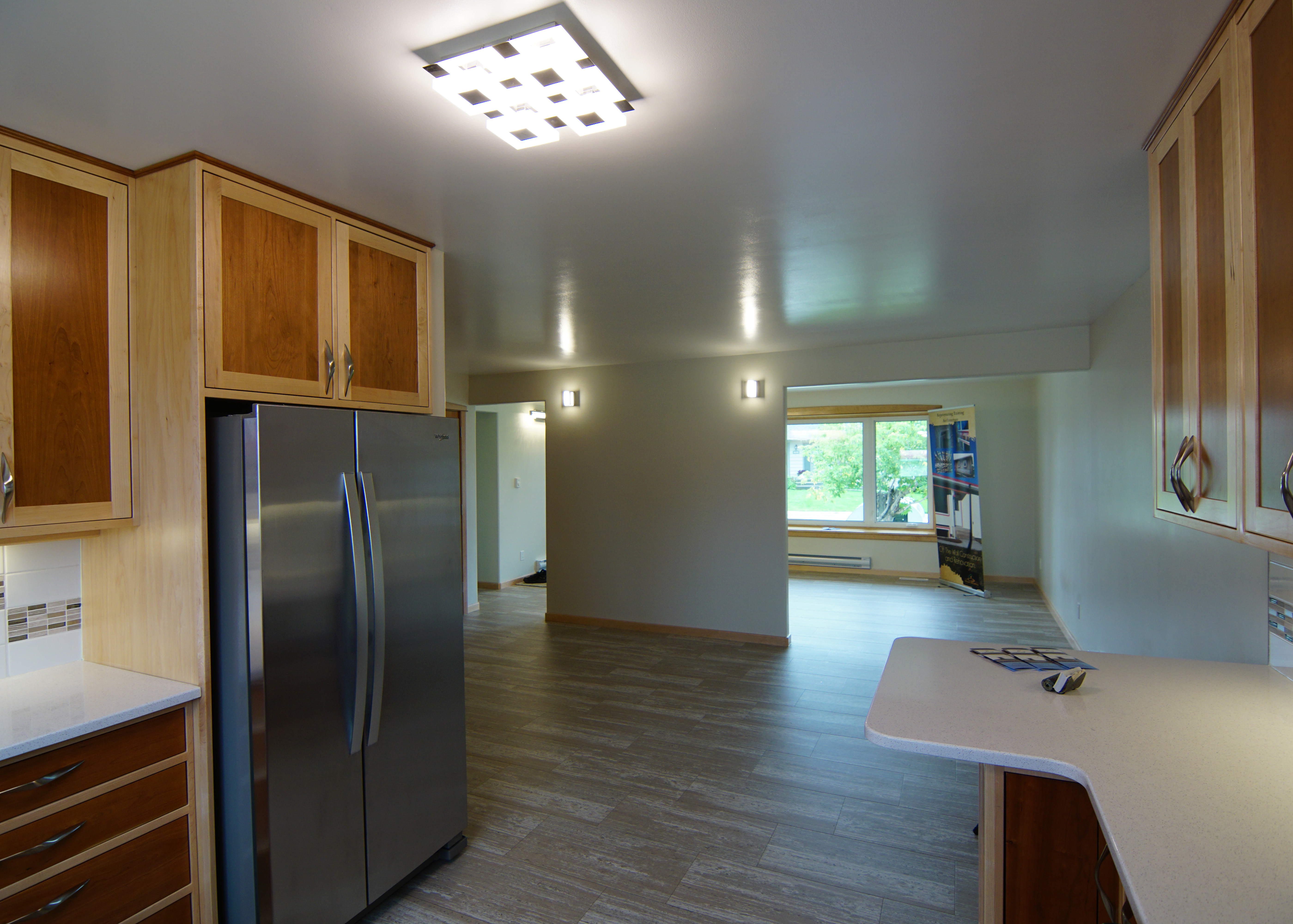Project Description
Planning the Retrofit
Keith Warren developed this process himself (he owns the patents) for attaching straw bales to the exterior of a home in a way that allows the air to flow through the straw. This prevents condensation and protects the straw bales from the elements. What’s more, straw is a locally available by-product of agriculture, and sequesters more greenhouse gasses than is required to plant, harvest and store. Warren’s system adds an R value of 40 to the building in addition to what it already has. Since 2020, the home’s 8.5 kWh solar has provided all the energy requirements of the building, which is completely electrical. The home is tied to the grid, but generates more power than what is purchased during overcast days and extreme temperatures in the summer and winter.
Before & After
General
|
|
Before |
After |
Building Condition
|
Before
Minimally improved from it’s original 1960’s condition. Frequent temperature swings |
After
Full refinish on the interior in addition to the exterior and envelope improvements |
Comfort
|
Before
Typical drafty 60’s construction. Frequent temperature swings |
After
Limited temperature swing in both heating and cooling seasons, significant reduction of exterior sounds |
Envelope
|
|
Before |
After |
Ceiling/Attic Assembly
|
Before
R15 (estimate), wood shavings |
After
R60 fiberglass extends across the top of the straw bale insulation column, 6 mil vapour barrier. |
Foundation Wall Assembly
|
Before
2×4 framing with 1/4″ paneling |
After
R40 straw wrap/ 8″ above grade, R20 fiberglass interior walls to footings/floor joists R40 fiberglass/ 6 mil vapour barrier to footings |
Wall Assembly
|
Before
R8 fiberglass, no vapour barrier. Twenty-minute fire burn rating. |
After
R12 fiberglass, 6 mil vapour barrier, R40 exterior straw wrap, building paper and new stucco. 2-hour fire burn rating. |
Windows and Doors
|
Before
Aluminum sliders |
After
Triple glazed, triple low E coating, double Argon gas fill between panes, PVC frames. All windows are recessed on the exterior to reduce wind effect on the surface |
Mechanical & Electrical
|
|
Before |
After |
Heating
|
Before
1980 gas furnace |
After
Individual room thermostatic controlled- electric base board heaters, sized for individual room heat loss. |
Cooling
|
Before
None |
After
No mechanical cooling system required because of the superior insulation envelope. |
Hot Water
|
Before
1980 pilot lit gas fired hot water tank |
After
Standard 40-gallon electric hot water tank which utilizes room air temperature to raise the incoming water temperature from +3C to +15C. All sinks in home have ‘on demand’ electric heaters for source point hot water. |
Ventilation
|
Before
None |
After
Broan 7.1 HEPA (Heat recovery ventilation system) With 70’ of 4” plastic pipe below grade in the crawl space to pre-heat incoming fresh air (air intake -30C temperature is +7 C at the HRV intake/Summer temperature +25C is reduced to +15C at HRV intake supporting air cooling. |
Renewables
|
Before
None |
After
8.5 KWH solar panels on roof, metal raised rib roof allows solar panels to be attached without roof penetration. EV Charging station in new double garage. |
Electrical Service
|
Before
100 Amps |
After
200 Amps |
Photos
Pre Retrofit
During Construction
Post Retrofit
